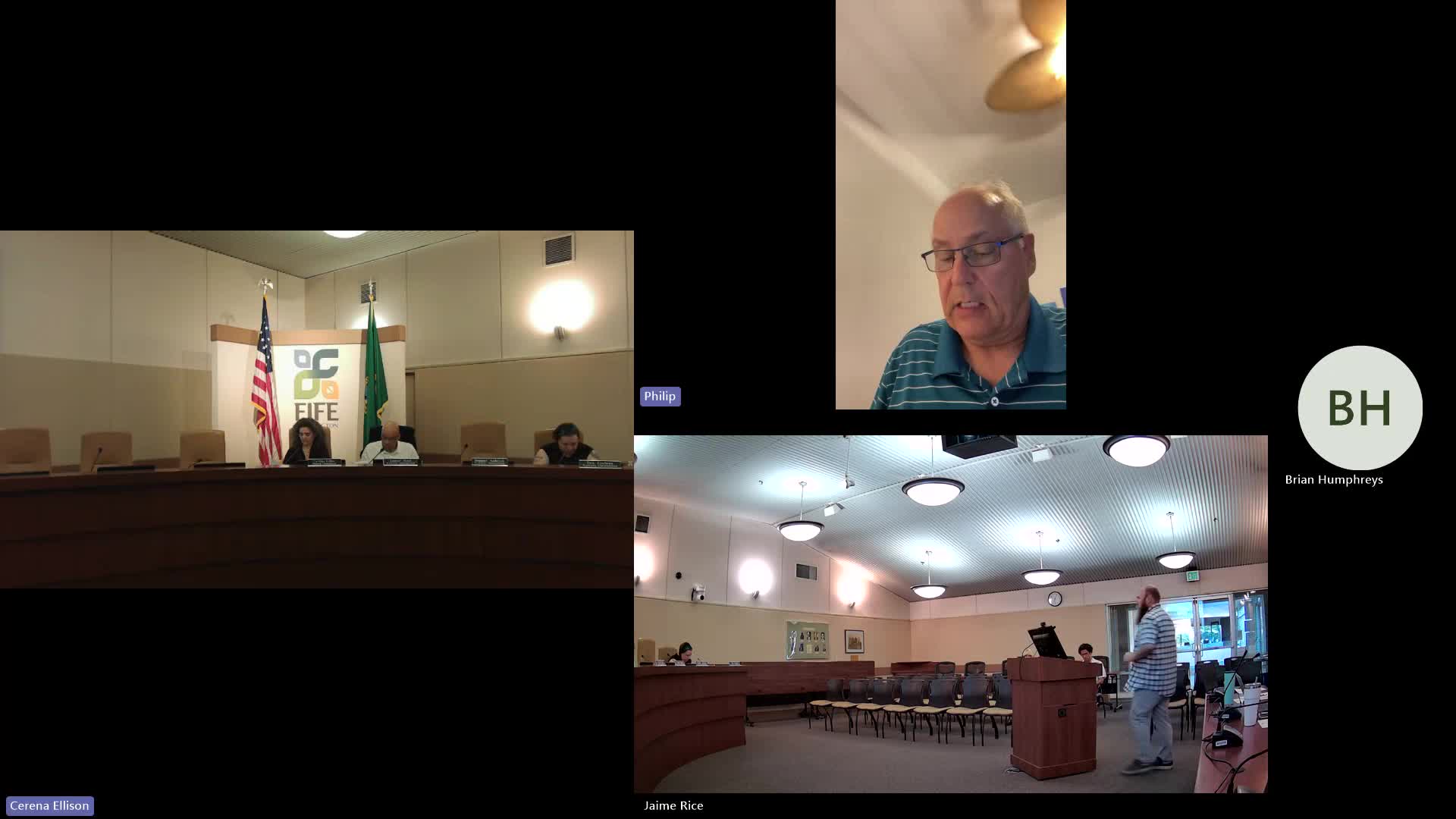City launches ambitious climate vulnerability assessment project
July 01, 2024 | Fife, Pierce County, Washington

This article was created by AI summarizing key points discussed. AI makes mistakes, so for full details and context, please refer to the video of the full meeting. Please report any errors so we can fix them. Report an error »

In a recent government meeting, officials discussed the ongoing development of a climate vulnerability assessment focused on sea level rise and riverine flooding, a project funded by a competitive grant from the Department of Ecology. The assessment aims to identify vulnerabilities within the community and provide guidance for future development and climate adaptation strategies.
The project, which is being conducted in partnership with the consulting firm Moffett Nichols, is currently in its halfway stage and is expected to culminate in a comprehensive climate adaptation plan by the end of 2024. The assessment consists of four main components: establishing a baseline of vulnerabilities, documenting specific risks, offering guidance for future development, and supporting the creation of relevant policies.
During the meeting, project leaders emphasized the importance of public engagement in the assessment process. An open house event held on April 4 allowed community members to voice their concerns and experiences related to climate change, marking a significant step in raising awareness and gathering input for the project.
Moffett Nichols representatives highlighted the critical nature of understanding vulnerability in the context of climate change. They defined vulnerability as a combination of exposure, sensitivity, and adaptive capacity, explaining how these factors influence the potential impact of climate-related hazards on the community's infrastructure and natural resources.
The meeting also addressed projections for sea level rise, with estimates indicating a potential increase of 1.2 feet by 2050 and up to 3.3 feet by 2100 for the region. Additionally, the assessment will consider the anticipated increase in streamflow due to more intense rainfall events, which could exacerbate flooding risks.
As the city of Fife prepares to navigate these challenges, officials are focused on developing strategies that account for both sea level rise and riverine flooding, particularly the phenomenon of compound flooding, which occurs when riverine and tidal effects combine. The draft assessment is now ready for review, and stakeholders are encouraged to provide feedback to refine the strategies moving forward.
The project, which is being conducted in partnership with the consulting firm Moffett Nichols, is currently in its halfway stage and is expected to culminate in a comprehensive climate adaptation plan by the end of 2024. The assessment consists of four main components: establishing a baseline of vulnerabilities, documenting specific risks, offering guidance for future development, and supporting the creation of relevant policies.
During the meeting, project leaders emphasized the importance of public engagement in the assessment process. An open house event held on April 4 allowed community members to voice their concerns and experiences related to climate change, marking a significant step in raising awareness and gathering input for the project.
Moffett Nichols representatives highlighted the critical nature of understanding vulnerability in the context of climate change. They defined vulnerability as a combination of exposure, sensitivity, and adaptive capacity, explaining how these factors influence the potential impact of climate-related hazards on the community's infrastructure and natural resources.
The meeting also addressed projections for sea level rise, with estimates indicating a potential increase of 1.2 feet by 2050 and up to 3.3 feet by 2100 for the region. Additionally, the assessment will consider the anticipated increase in streamflow due to more intense rainfall events, which could exacerbate flooding risks.
As the city of Fife prepares to navigate these challenges, officials are focused on developing strategies that account for both sea level rise and riverine flooding, particularly the phenomenon of compound flooding, which occurs when riverine and tidal effects combine. The draft assessment is now ready for review, and stakeholders are encouraged to provide feedback to refine the strategies moving forward.
View full meeting
This article is based on a recent meeting—watch the full video and explore the complete transcript for deeper insights into the discussion.
View full meeting
